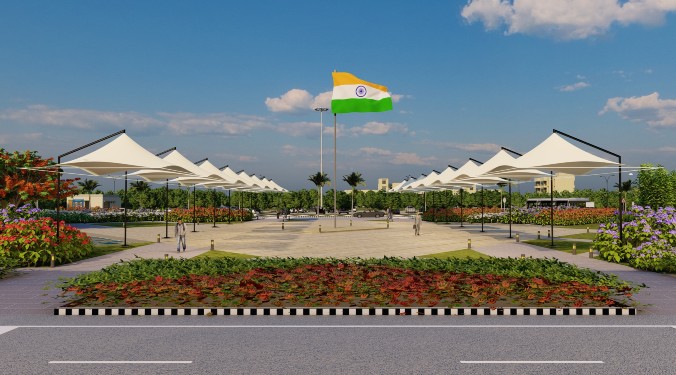“CAPA believes that airport infrastructure development should be carried out within the framework of a ‘Long-term Aviation Master Plan’ with a time horizon of 30-40 years,” says Gurdeep Aggarwal, Associate Manager, South Asia Office, CAPA India
CAPA is one of the leaders in global aviation knowledge, delivering market analysis, data and information services to support strategic planning at blue chip international aviation organisations. In an exclusive interview, Mr Aggarwal, shares how Indian aviation industry has been undergoing transformational changes and how India should prepare itself for the tomorrow.
Airport infrastructure in IndiaAt present India has 130 airports of which about 80 airports handle regular scheduled domestic services.
The Airports Authority of India (AAI), the state-owned airport operator, is responsible for 124 of these airports. Five airports — Delhi, Mumbai, Bengaluru, Hyderabad and Cochin — operate on a public-private partnership (PPP) model in which the AAI’s shareholding is 26 per cent or less.
In FY2013/14, India’s operational airports handled 169 million passengers, comprising 122.4 million domestic and 46.6 million international passengers, a y-o-y increase of 6.1 per cent. Delhi Airport is the largest in the country, handled 36.9 million passengers in FY14, followed by Mumbai at 32.2 million.
PPP in building airportsPPP in building airports has largely been a successful exercise. Dramatic improvements in airport infrastructure have transformed the passenger experience, improved the efficiency of airline operations and delivered a massive dividend to the AAI. However, there are areas for improvement, particularly with respect to economic regulation, land monetisation, management of project costs, and developing a more predictable operating environment in terms of bilateral policy, airspace efficiency and airline viability. Lessons from the experience with PPP airports will need to be factored into future projects.
Increased charges at PPP airports have certainly been a contentious issue for airlines. On some domestic sectors, for example, up to 10-12 per cent of the average gross fare is represented by airport charges and fees. A clear process needs to be established for determining the appropriate level of capital expenditure in airports and for monitoring project costs to prevent the massive budget overruns that have occurred in some cases – which in turn result in higher charges.
In September, 2013, the AAI announced plans to award PPP concessions at six airports – Chennai, Kolkata, Ahmedabad, Guwahati, Jaipur and Lucknow – with a further nine airports to follow. However, the tender process has been stalled for several months due to a lack of preparedness with respect to the concession agreement and the revenue-sharing and tariff-structure framework. Following the general election, the new government has yet to indicate how it intends to proceed.
Growth potential and challengesCAPA projections show airport passenger traffic growing from 169 million in 2013/14 to 452 million by 2022/23, making India the third largest aviation market in the world behind the US and China. However, this rate of growth will require huge investment in airport infrastructure. Even structural challenges must be addressed on priority basis, but CAPA analysis indicates that India is currently under-prepared to meet these challenges.
Estimated investment in the airport sector is set at $12.7 billion as per India’s 12th Five-Year Plan (2012-2017), of which almost 75 per cent is expected to be contributed by the private sector. Domestic funding will not be sufficient to support this level of activity. If foreign investment is to be attracted, India needs to provide external capital with greater confidence with respect to market risks. This will require clarity on the regulatory framework, improved governance, enhanced coordination between stakeholders and stronger execution capabilities.
Land scarcity will be other major challenge for airport development in India as India is already facing a shortage of land, particularly in the larger towns and cities, and this issue will only intensify with the increase in urbanisation. Airports have massive land requirements and will have to fight with other users of land, for what will be an increasingly expensive asset. In fact, the cost of land may ultimately impact the viability of many airport projects.
CAPA believes that airport infrastructure development should be carried out within the framework of a “Long-term Aviation Master Plan” with a time horizon of 30-40 years
19
Cookie Consent
We use cookies to personalize your experience. By continuing to visit this website you agree to our Terms & Conditions, Privacy Policy and Cookie Policy.









